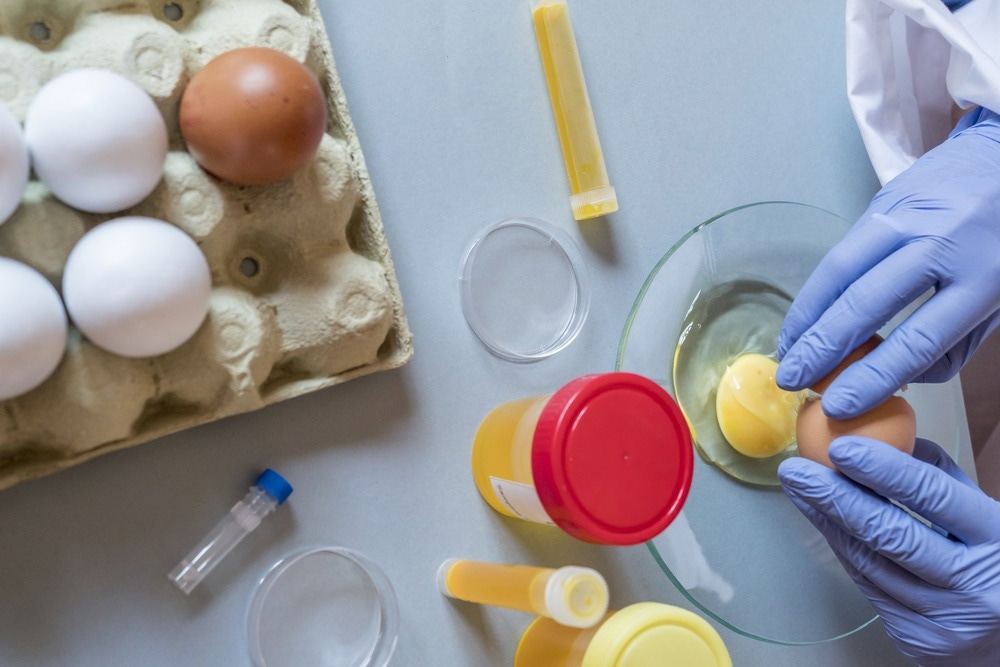The rapid growth and application of mass spectrometry has been remarkable, especially regarding its use in investigating and generating results for food fraud analysis.

Image Credit: felipe caparros/Shutterstock.com
The need for food has grown as a result of a growing global population and higher life expectancies, which has also resulted in a boom in the food sector.
There are certain instances when profit is produced illegally through the selling of fake food in the food sector, even though the majority of firms make their profit by operating within the law. Since the beginning of commerce, there have been instances of food fraud in the retail and food production industries.
Food Fraud
The purposeful and intentional addition, modification, misrepresentation, or substitution of food, food components, or food packaging for financial advantage is referred to as food fraud.
Food adulteration frequently remains unnoticed until it is too late to fix the problem, which increases the danger to human health. Food contamination, whether intentional or unintentional, has been identified by the World Health Organization (WHO) as one of the biggest hazards to public health in the twenty-first century. Depending on the type of adulterant used and the level of contamination, food adulteration can have a significant negative influence on the general public's health. Direct food fraud is the intentional addition of hazardous or deadly pollutants to food, which puts the public's health in imminent danger.
All foods may be affected by the tampering and fraudulent selling of food, which is thought to be expanding at a rapid rate. Food fraudsters could also have an impact on products with certified labels like "Organic" and "Fair Trade" items.
There has been a significant amount of work put into detecting food fraud.
Spectroscopic methods such as ultraviolet-visible (UV), near-infrared, mid-infrared (MIR), (NIR), Raman, fluorescent, Fourier transform infrared (FT-IR), as well as other techniques such as polymerase chain reaction, enzyme-linked immunosorbent assay, and nuclear magnetic resonance have all been used as detection techniques.
However, the majority of these methods need protracted and difficult test and sample preparation periods. An analytical chemistry technique referred to as mass spectrometry has the ability to solve these problems while producing outcomes that are on par with those of other traditional methods.
Mass Spectrometry
A mass spectrometer can be as small as a penny or as big as a room. Even though the many instrument types have quite distinct uses, they all operate according to the same basic principles.
Molecules that have been transformed into gas-phase ions can be used in a mass spectrometer to calculate the mass of the molecule. In order to achieve this, ionization of molecules gives them an electrical charge which allows them to flow as electrically charged ions along a mass spectrometer. The charged particles result in a proportionate electrical current that a data system can subsequently read.
According to their mass-to-charge ratios (m/z), the ions are separated, identified, and quantified. A mass spectrum is generated by plotting the relative ion current (signal) vs m/z. Further analysis using advanced software identifies the constituent molecules.
Complicated molecules are first broken down into their constituent parts to achieve great precision, as is possible with magnetic sector instruments.
Mass spectrometers were originally believed to be incapable of accurate quantification and were only used as adjuncts in identifying chemical identification. However, more recently, they have demonstrated their value as both qualitative and quantitative tools.
Ionization of Molecules
Ions can be produced in a variety of methods depending on the target analyte being studied. For example, electron beam ionization uses an energetic electron beam to collide and dissociate a molecule into ions. Another method is laser ablation, and when the eluent from a liquid chromatograph is subjected to electrospray ionization, ions from an aerosol are produced.
How effectively a mass spectrometer can measure the true mass or its accuracy varies with the type of mass spectrometric method implemented. Some examples are given below:
- Time of flight mass spectrometry (TOFMS)
- Isotope ratio mass spectrometry (IRMS)
- Proton transfer reaction-mass spectrometry (PTR-MS)
- Inductively coupled plasma mass spectrometry (ICP-MS)
- Liquid chromatography-mass spectrometry (LC-MS) and
- Gas chromatography-mass spectrometry (GC-MS);
- Ambient Mass Spectrometry (AMS)
Future Outlook
It has been demonstrated that mass spectrometry may improve and assist in the process of finding damaged food.
Mass spectrometry methods produce quick, reliable findings that, most critically, are equivalent to those from traditional methods despite requiring little sampling time. The development of faster software with advanced analytical capabilities will improve the accuracy of mass spectrometric findings. It is evident that the application of mass spectrometry to problems with food adulteration is expanding quickly. It looks to be a branch of analytical chemistry that caters to the requirements of industry and regulators, and it may wind up being one of the most crucial analytical instruments for spotting food fraud all over the world.
More from AZoOptics: Breaking the Limits of Traditional Infrared Spectroscopy with Photothermal Spectroscopy Corp
References and Further Reading
Connor Black, Olivier P. Chevallier, Christopher T. Elliott, The current and potential applications of Ambient Mass Spectrometry in detecting food fraud, TrAC Trends in Analytical Chemistry, Volume 82, 2016, Pages 268-278, ISSN 0165-9936, https://doi.org/10.1016/j.trac.2016.06.005.
Shao, Bing, Hui Li, Jianzhong Shen, and Yongning Wu. "Nontargeted detection methods for food safety and integrity." Annual review of food science and technology 10 (2019): 429-455.
Zambonin, Carlo. "Maldi-tof mass spectrometry applications for food fraud detection." Applied Sciences 11, no. 8 (2021): 3374
The Mass Spectrometry Primer. What is Mass Spectrometry and How Does it Work? [Online] Waters.com. Available at: https://www.waters.com/nextgen/gb/en/education/primers/the-mass-spectrometry-primer/what-is-ms-and-how-does-it-work.html
Disclaimer: The views expressed here are those of the author expressed in their private capacity and do not necessarily represent the views of AZoM.com Limited T/A AZoNetwork the owner and operator of this website. This disclaimer forms part of the Terms and conditions of use of this website.